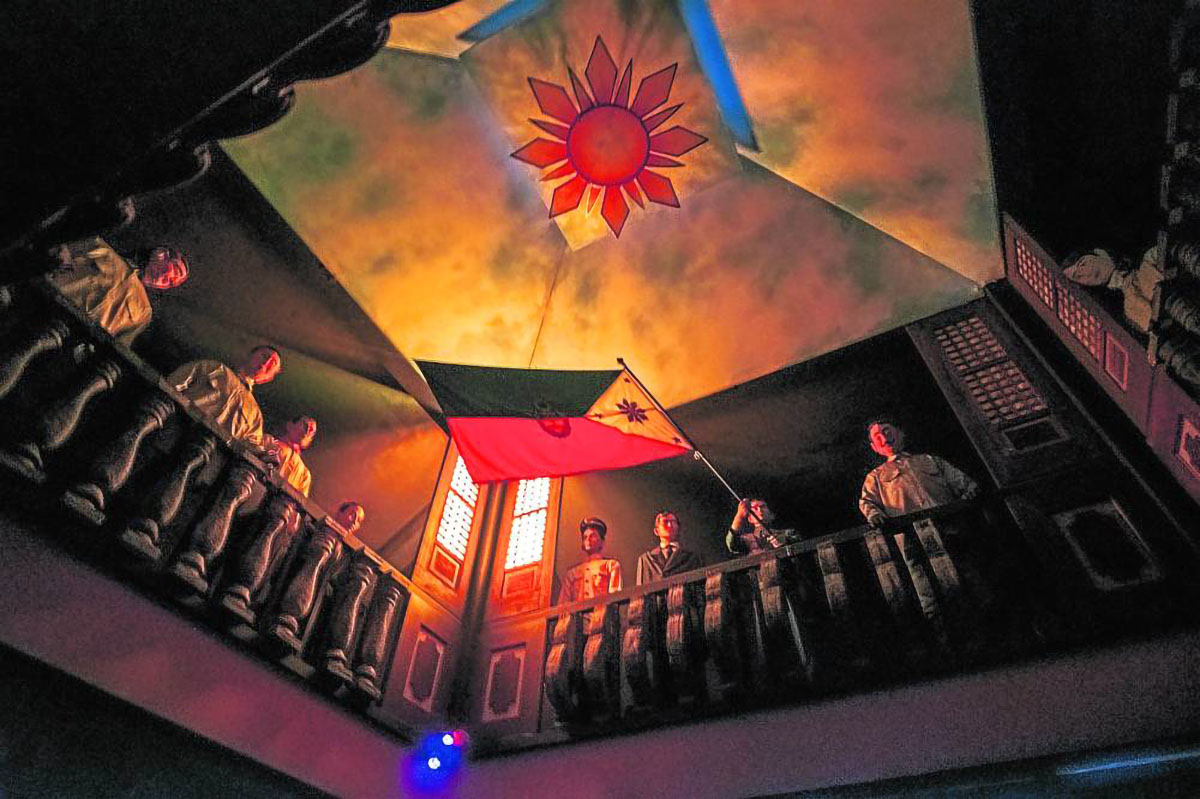
FORGOTTEN HERITAGE The grandchildren of Gen. Emilio Aguinaldo have spent most of their lives taking care of an old Philippine flag which they believe is the banner unfurled during the declaration of the country’s independence from Spain on June 12, 1898, in Kawit, Cavite. That flag, kept at the family-run museum in Baguio shown in this photo, has never been recognized by the government.
BAGUIO CITY, Philippines — The more than a century-old fraying Philippine flag, which Gen. Emilio Aguinaldo’s youngest daughter Cristina found beneath his deathbed in 1964, never got the national recognition it deserved.
But it could soon be an important historical and heritage artifact of Baguio, which has been its home for nearly 40 years.
Cristina brought the flag to Baguio in 1985 and kept it in a bungalow on Happy Glen Loop, which she filled with her father’s memorabilia, including his old clothes, photographs, manuscripts and even his wheelchair. The house became the General Emilio Aguinaldo Museum (Aguinaldo Museum).
READ: Rereading history from online sources
For two of Aguinaldo’s grandchildren—his namesake Emilio Aguinaldo Suntay III and sister Nenita Suntay-Tanedo—this was the same flag that rallied Filipino revolutionaries when it was hoisted at the Declaration of Independence on June 12, 1898, in Kawit, Cavite.
But while its authenticity as a revolutionary flag was never in dispute, some scholars doubt this was the Philippine flag, which was made by hand in five days at 535 Morrison Hill Road in Hong Kong by a team led by Doña Marcela Agoncillo.
Agoncillo was aided by her daughter Lorenza (5 or 7 years old at the time) and Jose Rizal’s niece Delfina Herbosa Natividad (wife of Katipunero Salvador Natividad), and was able to deliver the banner to Aguinaldo before he sailed back to the Philippines on May 17, 1898.
‘Authentic’
A Sept. 5, 2012, essay titled “The Controversial Philippine National Flag,” which was posted by the National Historical Commission of the Philippines, acknowledged that the flag “was authentic and a contemporary of the original flag.”
However, the essay concluded that it could not be the genuine banner because the flag kept in Baguio “was made of combined silk and cotton fabric, not fine silk, as stated by the flag-maker (Agoncillo) herself in (the magazine) ‘Philippine Herald’ published in October 1929.”
It is the flag’s connection to this city that makes it culturally and historically important to Baguio, said Rosella Bahni, an Ibaloy teacher and a member of the team that is researching and documenting everything of cultural value in the city for Baguio’s cultural map.
“The flag was initially part of the first set of heritage properties and artifacts [that] we wanted to document but we could not get permission. It may have been because the owners [of the museum] were not here in Baguio at the time,” Bahni said in a June 7 interview.
She said they intended to pursue it again.
“Tour guides and tour operators have included the first flag in their itinerary,” said city tourism officer Aloysius Mapalo in a separate interview.
The Aguinaldo Museum, for one, is in the local tourism circuit and has its own historical profile installed by the city at its gates, he said.
Elias Aoanan, assistant city planning, development and sustainability officer, said the museum has also been cited as an important property in the latest city land use plan and is the subject of a future project that would upgrade the surrounding park.
Sun’s face
The flag’s existence was revealed for the first time in 1998, during the centennial of Philippine independence.
Its unique features immediately drew the interest of experts. The image of the sun at the flag’s hoist (the part of the flag that is tied to a pole) has a face, and the phrase “Fuerzas Expedicionarias del Norte de Luzón” (Expeditionary Force of North Luzon) was stitched in gold thread as it ran down one side of the flag.
The gold-stitched words “Libertad” (liberty) and “Justicia” (justice) ran down on the opposite side of the banner. The blue on this flag is also paler than the blue field of modern flags.
In 2007, experts said that no technology could keep the relic from deteriorating. The silk fabric had splintered and opened up holes. Only the net meshing that was installed earlier had kept the banner from breaking up.
Mission
It has become Suntay’s mission to make sure every Filipino in the country visits this flag because of its limited lifespan.
In 2011, Suntay turned the flag’s home into an interactive museum, complete with a tour through a simulated battle complete with sound effects to showcase the Katipunan’s battle flags, including one associated with Gen. Gregorio del Pilar, before finally stopping at a dimly lit, temperature-controlled room where the old flag is displayed.
The museum also has papier mache statues of the hero’s revolutionary compatriots, including Andres Bonifacio, who was executed following a controversial leadership feud with Aguinaldo.
In 2016, Suntay gathered cosplayers to see the flag, saying at the time that it was meant to inspire them given that their generation confronts crises like climate change, global economic turmoil, and the territorial conflict with China.
“By granting them a peek at the first flag and all the stories about what it represents, I am hoping this generation will appreciate and emulate real-life heroism,” he said.